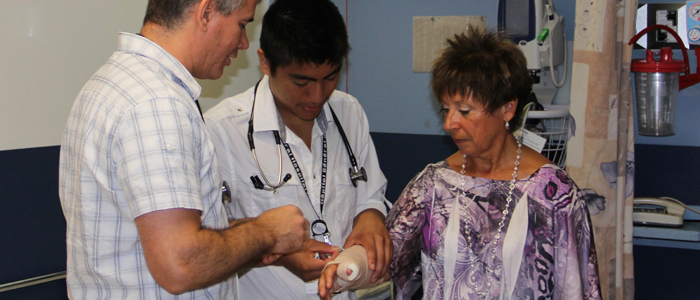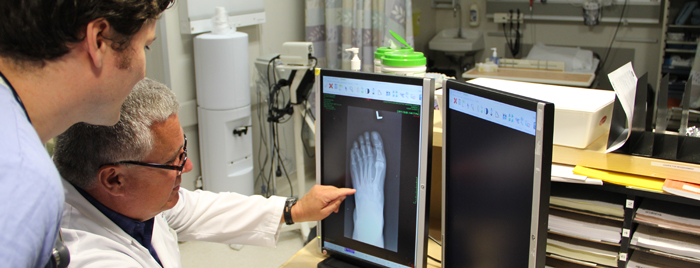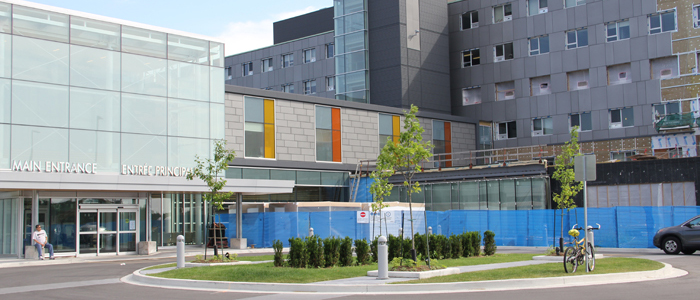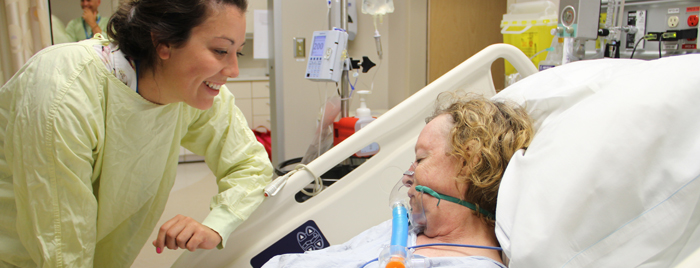Community Week is a fun way to end the first year of medical school. It is a mandatory one-week placement in a rural setting which takes place at the end of first year. It is a way to try and consolidate the learning that has taken place at the medical school and put it into real world practice. This placement offers all University of Ottawa medical students a chance to experience a typical week in a smaller community, shadowing a physician, and experiencing some of the highlights of rural life.
Community Week is coordinated with our partners, the Rural Placement Networks. These networks are funded by the Ministry of Health to help arrange medical student placements in the community and fund student travel and accommodations. They also provide preceptor stipends and educational events for the local physicians. The networks that help us with Community Week are:
Eastern Regional Medical Education Program (ERMEP) and Rural Ontario Medical Program (ROMP):
STEP 1 - Relax! There is no action needed until the information session scheduled for the end of November.
STEP 2 - January: Fill out the ERMEP online form or ROMP online form as per instructions given during the information session.
STEP 3 - Get matched by the ERMEP or ROMP.
STEP 4 - May: Email your preceptor the week before the start date of your Community Week.
STEP 5 - Enter your placement in the clinical placement system.
STEP 6 - Complete the Community Week (and have fun!).
STEP 7 - Evaluation: Hand in to the DME Office the two University of Ottawa’s evaluation forms: the Community Week Student Evaluation Form and the Community Week Preceptor Evaluation Form. The forms can be emailed to the DME Office at [email protected] or delivered in person to the DME Administrative Assistant (RGN 2045).
STEP 8 - Fill out the reimbursement forms as per instructions given by ERMEP or ROMP.
Northern Ontario School of Medicine (NOSM):
Please note: NOSM only has a few opportunities available for French students.
The following is the summary of the procedures that need to be followed for a NOSM Community Week placement.
STEP 1 - Students are notified which sites are available by the DME Office (January).
STEP 2 - Students e-mail the DME Office at [email protected] with their preferences.
STEP 3 - Get matched.
STEP 4 - Fill out the NOSM online form
STEP 5 - Enter your placement in the clinical placement system.
STEP 6 - Complete the Community Week (and have fun!).
STEP 7 - Evaluation: Ensure that you hand in to the DME Office the two University of Ottawa evaluation forms: the Community Week Student Evaluation Form and the Community Week Preceptor Evaluation Form. The forms can be emailed to the DME Office at [email protected] or delivered in person to the DME Administrative Assistant (RGN 2045).
STEP 8 - Fill out the Faculty reimbursement form for travelling expenses as per instructions given by the DME Office.
Special Request Option
Special request option is available if extenuating circumstances prevents students for doing their Community Week at the specific date - information will be given during the first session in November.
The following procedure explains how to make a special request:
STEP 1 - Request: Send a request in writing to the DME Office at [email protected] stating the reason for the request. Please include the name of the community as well as the name and address of the preceptor. (Note: this request must be placed before the due date specified in the information session.)
STEP 2 - Approval: If the request is approved, ensure that the preceptor receives the Community Week Preceptor Guide and completes the Preceptor letter of agreement. (Note: This must be completed by your preceptor.)
STEP 3 - Ensure that the preceptor signs and returns the Preceptor Letter of Agreement to the DME Office (by DME Office at [email protected] or by fax).
STEP 4 - Complete the Community Week (and have fun!).
STEP 5 - Evaluation: Ensure that you hand in to the DME Office the two University of Ottawa evaluation forms: the Community Week Student Evaluation Form and the Community Week Preceptor Evaluation Form. The forms can be emailed to the DME Office at [email protected] or delivered in person to the DME Administrative Assistant (RGN 2045). IF APPLICABLE – Fill out the Faculty reimbursement form for travelling expenses as per instructions given by the DME Office.
A Community Week information session is scheduled for the end of November. No action is required by the student before this meeting.
Please note: Students may wish to commute to and from their placements. However, it is highly recommended that students immerse themselves into the rural communities and utilize the accommodations for a true rural experience. Following confirmation of the accommodations, students must stay at the confirmed accommodations for the duration of their stay. Failure to do so is considered a professionalism issue.




